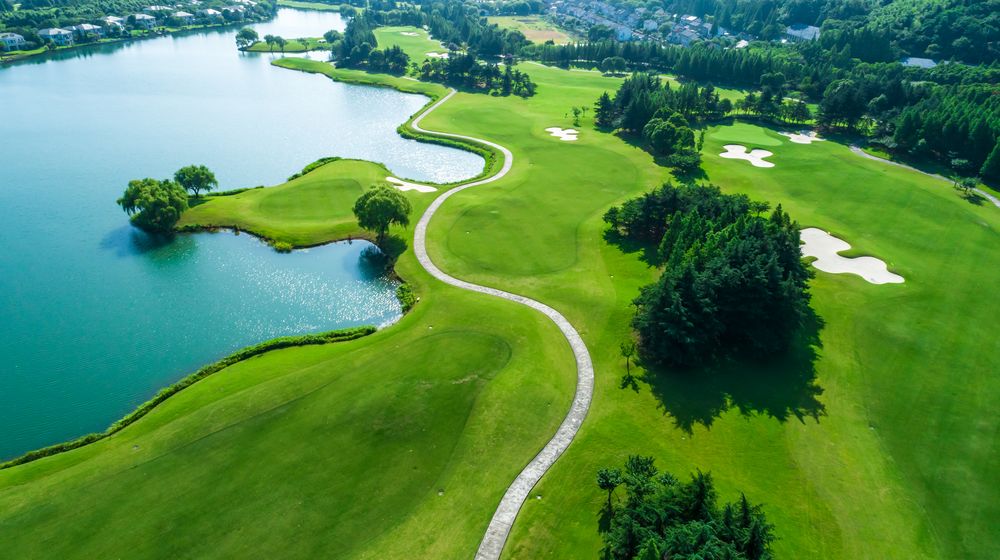Ways to reduce the impact of golf courses on the environment
Managing excessive water comsumption, reducing pesticides, avoiding lost golf balls... Find out our ideas for a more eco-friendly golf course.

Golf is considered to be the 4th most polluting sport after skiing, motor sports and shooting (1). The problems are caused by the installation of the grounds, which degrades the environment and groundkeeping which, it must be said, requires a lot of water and some pesticides. But France is investing time and money to change things. The French Golf Federation has signed two environmental-protection charters (2) in which it undertakes to make these efforts.

How to save water in green spaces: our guide
Limit excessive water consumption
Water is a vulnerable vital resource although essential for golf course groundkeeping. Good quality grass must be watered regularly. Golf courses consume a lot of water - a resource which is running out and which we must save. As the excessive use of water creates problems, we need to imagine new solutions. These include:
Synthetic grass. It has the virtue of needing little maintenance… and much less water than natural grass, as explained in this article.
Although the grass usually used for the golf courses requires a lot of water, this is not true for all grasses. Zoysia tenuifolia although difficult to pronounce, is one of them.
By March 2013, 90% of French golf courses (3) had already chosen to use non-potable water - rain and wastewaters - to irrigate their grounds. Grass may have a thirst for water but does not mind where it comes from!
Merely renovating or improving existing watering systems makes it possible to limit wasteful leaks and water losses…
The creation of reservoirs to recover, store and re-use rainwater is a popular solution.
It is also possible, like the French National Golf Course, to install irrigation systems able to detect the degree of moisture in the ground and only to sprinkle zones which need it.
Say no to pesticides but yes to sheep (and other animals)!
As all groundkeepers know, golf course maintenance is a complex task. Course quality must be irreproachable all year long to enable good rounds. This is why 100% of golf courses use plant health products to treat the greens (4)… But there are fewer and fewer approved products. In addition to the damage caused to water tables, some pesticides threaten human health and the health of fauna and flora. So what other solutions exist?
Entomopathogenic nematodes (threadworms)
They are parasites which fight the destructive insects and larvae which attack nearly 70% of golf courses (4).
Use of new spreading methods
Such as ride-on sprayers which optimize product application as it goes just where it’s needed…
Use eco-grazing
In other words, swap traditional mowers for sheep (or other herbivores). Besides ensuring even and meticulous grass cutting, this technique protects the environment.
6 good reasons to use eco-grazing
Use biological products
Find some help with our guide about the basics of an eco-friendly natural sports field maintenance.
Let nature take care of some plots of land
Like the Sainte-Baume golf club, the 4th French golf course to have been awarded a GEO Ecolabel.
Think about what happens to all the lost golf balls
14 golf balls are lost every second on courses in Europe and the United States (5). That’s about 450 million balls a year. Huge! And the bad news is that golf balls are not biodegradable. Once they are lost, they become an unseen enemy of the environment… But be aware. Solutions exist!
Secure the course so that the balls remain in a restricted perimeter and are easier to find.
Collect lost balls, for example by using divers to pick them up from lakes…
… and recycle or recondition them as more and more clubs are doing.
Find out how to secure golf courses
Do you need help to know how to keep up with your golf course maintenance?
Check the crucial phases to follow
(1) Sport et Vie, Le hit parade des sports les plus polluants, n°100, janvier / février 2007
(2) Ffgolf, premier rapport de la ffgolf, 2013
(3) Charte nationale golf et environnement, Premier rapport quinquennal : préservation de la ressource en eau – Étude quantitative
(4) Écophyto, Enquête nationale écophyto auprès des golfs français, 2016.
(5) Planetoscope, Balles de golf perdues en Europe et aux États-Unis
© Photo credit: ABCDstock / Adobe Stock

